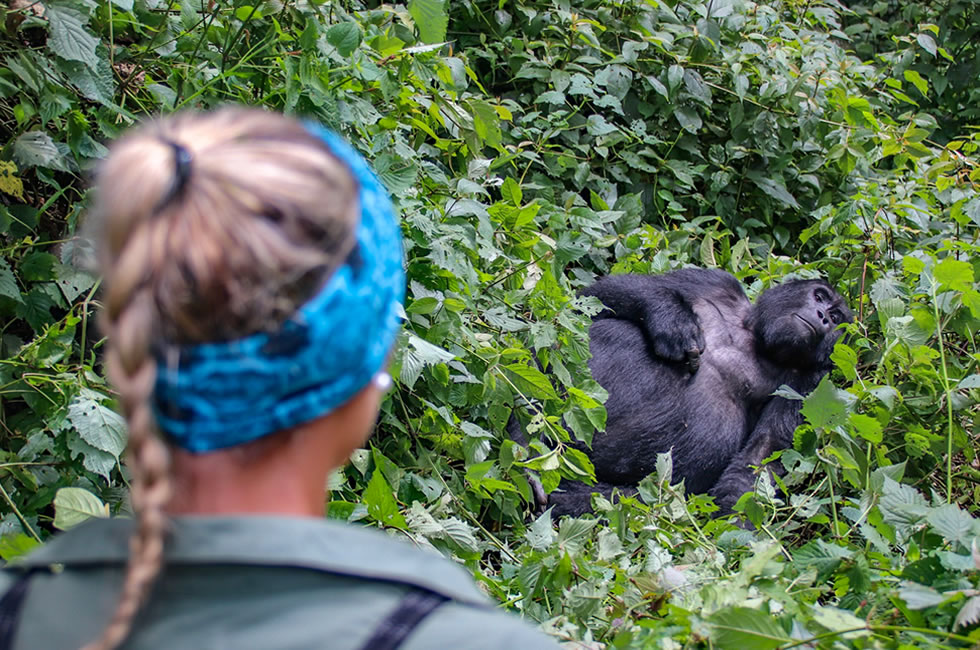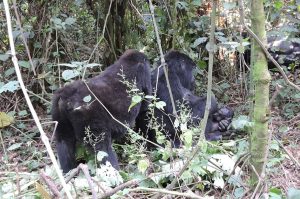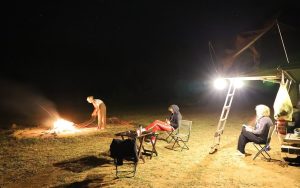
Mountain gorillas are endangered species that need to be protected and conserved for not only the present generation but also the future generations. Did you know that there are just a few mountain gorillas surviving in the wild? The 2012 Gorilla Census puts the number of mountain gorillas to about 880 individuals thriving in the wild. Though gorilla conservation agencies report a steady growth in the mountain gorilla population, a lot of awareness and other ways that can help save these gigantic creatures that are left only in Uganda, Rwanda and the unstable Democratic Republic of Congo that is always affected with wars, internal strifes and conflicts as well as poaching!
Following the conservation measures that are needed to protect the mountain gorillas, gorilla tourism was inaugurated in the three countries that are home to these manly creatures (remember they share 97% of human DNA)! The mountain gorillas are conserved in 4 national parks; Volcanoes National Park in Rwanda, Virunga National Park in Congo, Bwindi Impenetrable Forest and Mgahinga National Park in Uganda. Many travelers have embraced visiting the mountain gorillas in the wild. However the major question that conservation agencies do face is whether gorilla tourism is a sustainable activity! The answer to this query is a big YES! Indeed gorilla tourism is a form of responsible tourism which is so crucial to the protecting of the mountain gorillas.
Promoting Tourism in Recipient Countries
Gorilla tourism has helped a lot in promoting tourism within Uganda, Rwanda and Congo. These species have greatly attracted many tourists to come for gorilla trekking safaris to the country. In both Uganda and Rwanda the main attraction is the endangered mountain gorillas, pulling lots of tourists to the country. Looking into the pensive brown eyes of the mountain gorillas is indeed a thrilling adventure that has attracted lots of tourists to Uganda and Rwanda. The receipts from gorilla tourism are important in running conservation programmes in the gorilla parks and are also a percentage is shared with the neighboring local communities living adjacent to the gorilla parks.
How Gorilla Trekking is Conducted
Gorilla tourism is conducted in a way that the mountain gorillas are protected and are less to humans. All activities of tourists taking gorilla safaris are regulated within the three countries that host the mountain gorillas. There are a few habituated gorilla groups that tourists visit for gorilla watching; within Uganda there are ten habituated gorilla troops, Rwanda has ten groups and Congo has 4 gorilla groups that can be visited by tourists. Each group allows only 8 tourists per day and observation is strictly limited to only 1 hour.
The monkeys are also exceptionally well represented in Uganda. Indeed, Kibale Forest boasts the greatest primate variety and density in East Africa, with five or six species likely to be observed over the course of one afternoon walk. Elsewhere , Mgahinga National Park also hosts habituated troops of the rare golden monkeys, while Murchison falls is also one of the few east African strongholds for the spindly , plains- dwelling patas monkey. The fossilised20 million year old bones of morotopithesus, the earliest known ancestor of modern apes and the humans, unearthed in the 1960s near Moroto in Eastern Uganda, and are now housed in the national museum in Kampala.




